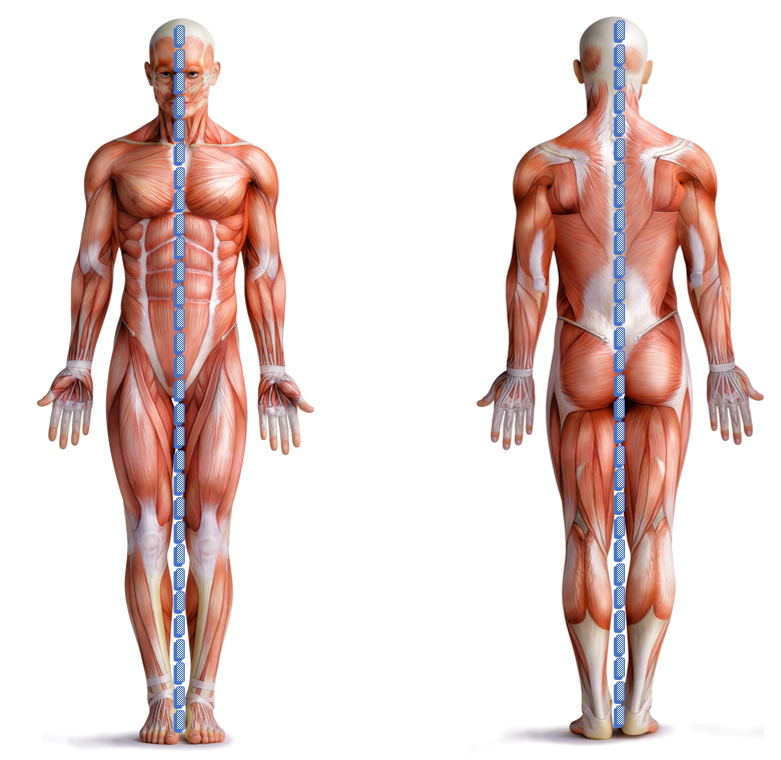Compendium 1
1/47
Earn XP
Description and Tags
Anatomy and physiology, anatomical terminology, serous membranes
Name | Mastery | Learn | Test | Matching | Spaced |
|---|
No study sessions yet.
48 Terms
What are anatomy and physiology?
Anatomy: study of the structure of organisms and their parts. Physiology: study of the normal function of living organisms and their parts.
List the different levels of anatomy.
Gross anatomy (macroscopic), surface anatomy (macroscopic), microscopic anatomy, and developmental anatomy.
What is gross anatomy?
Structures examined without the aid of a microscope, including systemic and regional anatomy.
What is surface anatomy?
The study of the external form of the body and its relation to deeper structures.
What is microscopic anatomy?
The study of structures with the aid of a microscope, including cytology and histology.
What is developmental anatomy?
The study of the structural changes that occur in the body throughout the lifespan.
List the levels of physiology.
Molecular, cellular, systemic (e.g., neurophysiology, cardiovascular physiology).
List the six levels of organization in the body.
Chemical, cellular, tissue, organ, organ system, organism.
Give an example of the chemical level of organization.
Atoms (e.g., hydrogen, carbon) interacting and combining into molecules (e.g., DNA, RNA, sugar, water).
Give an example of the cellular level of organization.
Molecules interacting and combining to form organelles (e.g., nucleus, mitochondrion) of a cell.
Give an example of the tissue level of organization.
Numerous similar cells joining to form a tissue type (e.g., smooth muscle tissue).
Give an example of the organ level of organization.
Two or more tissue types forming an organ that performs one or more functions (e.g., bladder).
Give an example of the organ system level of organization.
A group of organs performing a common function (e.g., kidneys, bladder, ureters) making up a system (urinary system).
Give an example of the organism level of organization.
living thing with a complex network of organ systems that work together
List the six characteristics of living organisms.
Organization, metabolism, responsiveness, growth, development, reproduction.
What is metabolism?
using energy (chemical reactions) to perform vital functions.
What is responsiveness?
ability to sense and adjust/react to changes in the environment.
What is growth?
An increase in the size or number of cells, leading to overall enlargement of the organism.
What is development?
The changes an organism undergoes through time.
What is reproduction?
The formation of new cells and new organisms, where living organisms pass on their genes to their offspring.
What is homeostasis?
The maintenance of a relatively constant environment inside the human body.

Why is the anatomical position used as the standard reference to describe body parts and their relationship to each other? (4 marks)
its clear, consistent, creates a common point and avoids confusion when discussing structure and function
Fill with the directional term. The eyes are ___ to the chin
superior
Fill with the directional term. The pelvis is ___ to the stomach.
inferior/caudal
Fill with the directional term. The heart is ___ to the vertebral column.
anterior/ventral
Fill with the directional term. The kidney are ___ to the stomach.
posterior/dorsal
What does supine and prone describe in directional terms?
person lying up and person lying down
Fill with the directional term, which is only used for structures relevant to limbs/connecting parts. The knee is ___ to the toes.
proximal
Fill with the directional term, which is only used for structures relevant to limbs/connecting parts. The fingers are ___ to the elbow.
distal
Fill with the directional term. The thymus is ___ to the kidneys
medial
Fill with the directional term. The ears are ___ to the nose.
lateral
Fill with the directional term. Hair is ___ to the tissue cells.
superficial
Fill with the directional term. The muscle is ___ to the epidermis
deep
What does the saggital plane split the body into, and what is the midsaggital plane
left and right
straight down the middle, equal left and right parts
What does the frontal/coronal plane divide the body into?
anterior and posterior
What does the transverse plane split the body into?
superior and inferior
What is the oblique plane?
doesn’t run parallel to other planes and doesn’t make right angles
What is the purpose of body cavities? (2 marks)
closed to the external environment
provides protection and contains internal organs
What is the difference between the ventral and dorsal body cavity?
ventral = anterior; contains thoracic, abdominal and pelvic cavities
dorsal = posterior; contains brain and spinal cord (nervous system)
What structure is within the thoracic cavity which contains the heart, trachea and oesophagus
medistinum
Why is the abdominal and pelvic cavities sometimes referred to as the abdominopelvic cavity?
it has no separation whereas the diaphragm separates the thoracic and abdominal cavity
Name/draw the regions of the abdominal cavity. Briefly describe the organs in each region
(drawn on whiteboard)
What are serous membranes?
double-layered membranes with serous fluid in between which lines the ventral body cavities and organs’ surfaces
What is the difference between parietal and visceral serous membranes?
parietal = lines body cavities
visceral = lines organs surfaces
What does the pericardial cavity contain, in terms of what it covers, serous membranes and its fluid
heart
parietal and visceral pericardium
pericardial fluid
What does the pleural cavity contain, in terms of what it covers, serous membranes and its fluid
lungs/ribs
parietal and visceral pleura
pleural fluid
What does the peritoneal contain, in terms of its serous membranes and its fluid
parietal and visceral peritoneum
peritoneal fluid
What does retroperitoneal mean?
when the peritoneum covers one side only